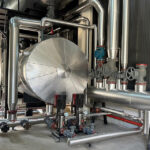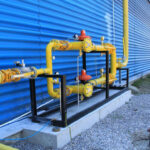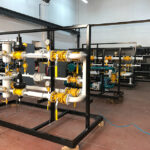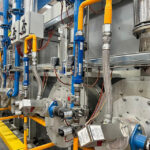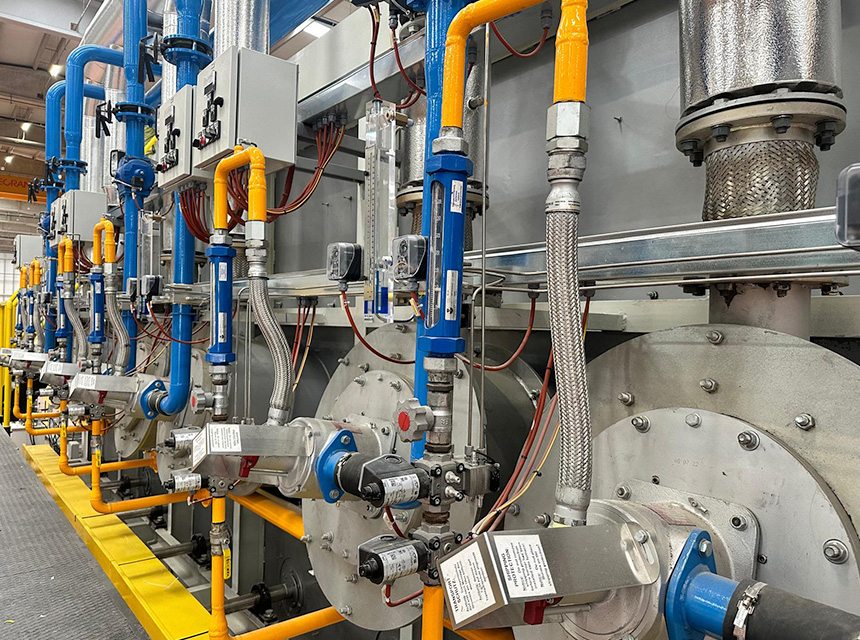
Natural Gas Internal Installation Design Process
A natural gas internal installation project forms the foundation for establishing a safe, efficient, and standards-compliant system in both residential and industrial facilities. These projects not only provide energy savings but also prevent serious safety risks such as explosions, fires, and gas leaks. Successful internal installation planning is possible through accurate site assessment, precise engineering calculations, proper material selection, and full compliance with legal regulations.
Projects prepared to ensure the safe distribution of natural gas within a building must be designed solely by licensed engineers and certified companies, and the approval process must be completed. These projects are inspected by natural gas distribution companies, and implementation cannot proceed without official approval.
The main objectives of such planning include the safe transportation of gas, ensuring long system life, improving energy efficiency, and obtaining project approvals quickly. These works are mandatory not only for new constructions but also for natural gas conversions in existing buildings and for comprehensive system renewals such as central heating boiler room applications.
The first step in an internal installation project is a technical site survey. The building’s architectural structure, appliance capacities, and planned consumption levels are taken into account to determine requirements. In existing buildings with a gas connection, chimney suitability, ventilation areas, and pipe conditions are checked and revised if necessary. The process, which begins with the survey, continues with technical calculations and design drawings.
Accurate calculation of gas demand is critical for efficient and trouble-free operation. Systems with insufficient capacity can cause performance issues in the future, especially in high-capacity setups such as hot water plants and installations or steam plants and installations. For this reason, BTU or kcal/h-based consumption values should be determined through professional engineering calculations.
The materials to be used in the project should be selected meticulously. Pipe options such as steel, copper, or PE (polyethylene) are chosen according to the system type and building specifications. In addition, regulators, valves, meters, and gas leak detectors must have TS and CE certifications. If the system is to be integrated with other technical systems such as compressed air systems and installations, all components must work in full compatibility.
Drawings prepared based on engineering calculations are usually created using AutoCAD or similar software. Technical details such as pipe diameter, gas flow rate, and pressure losses are clearly stated in the project. Pipe routes, appliance placements, and ventilation openings are also shown on the drawings to improve applicability.
For project implementation, approval applications are submitted to natural gas stations or the relevant distribution companies. At this stage, the drawings, calculations, and material lists are submitted together. If any deficiencies or inconsistencies are found during the approval process, they are corrected, and the application is resubmitted. Once approved, the installation phase begins.
During installation, the system must be assembled exclusively by authorized and certified personnel. The system cannot be commissioned without performing gas leak and pressure tests. These tests are critical for both safety and legal compliance. Natural gas distribution companies inspect on-site to ensure the project matches the actual installation.
After the system successfully passes the tests, the gas is activated, and usage approval is obtained. This ensures that the natural gas system can be used safely and efficiently with all its components.
Our company provides professional support at every stage of this process. From technical surveys to project design, from gas testing to commissioning, all operations are carried out meticulously. All materials used in the project have TSE and CE certifications. In addition, post-installation maintenance services ensure long-term system performance.
A frequently asked question is whether it is possible to use natural gas without a project. According to regulations, unapproved usage is strictly prohibited. The project duration depends on the size of the building and system complexity but is generally completed within a few weeks. The cost varies depending on pipe length, number of appliances, and chosen materials.
Carrying out all these processes professionally is essential to achieve maximum efficiency and safety from natural gas systems. Especially in integrated setups such as special process machine design and manufacturing, the internal installation design process is not just an obligation but a key element for overall system success.

